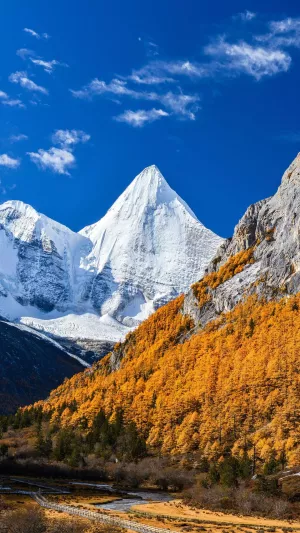Common perceptions often associate the equatorial region with intense, year-round sunlight and high temperatures. It might seem surprising, then, to learn that some equatorial regions are home to perennial snow.
This phenomenon occurs in high-altitude areas near the equator, where snow persists despite the generally warm climate of the surrounding region.
One notable example is Mount Kilimanjaro in northern Tanzania, Africa. Standing at 5,895 meters (19,341 feet) above sea level, Kilimanjaro is renowned for its snow-capped peak, despite its equatorial location. This equatorial snow mountain, often referred to as a "tropical glacier," presents an intriguing contradiction to the typical notion of warm, equatorial climates.
The presence of snow on such a high mountain in the equator can be explained by several factors. First and foremost, temperature decreases with altitude. As one ascends, the atmospheric pressure decreases, and the air becomes thinner. This thinning reduces the atmosphere's ability to insulate, allowing heat to escape more readily and causing temperatures to drop. Consequently, even in regions where the ground temperature is high, elevated areas can be cold enough to support snow.
Mount Kilimanjaro, despite its proximity to the equator, reaches such a significant height that its summit experiences temperatures below freezing. This ensures that the snow at its peak remains frozen throughout the year.
Additionally, the topography of high mountains like Kilimanjaro plays a crucial role in snow formation. Water vapour, which is carried by prevailing winds, is forced upward by the mountain's slopes. As it rises, it cools and condenses, falling as precipitation. In colder temperatures, this precipitation falls as snow rather than rain. Over time, the continuous snowfall accumulates and compresses into glaciers, forming the snow-capped peaks that are visible today.
This principle applies to other famous snow-capped mountains around the world, such as the Kunlun Mountains, the Tianshan Mountains, and the Himalayas. These ranges are characterized by their high elevations and frequent precipitation, conditions that allow snow to persist year-round.
Mount Kilimanjaro, whose name translates to "The Mountain of Light" in the local Chaga language, is not only Africa's highest peak but also the world's largest free-standing mountain. The mountain holds cultural significance for local tribes, who conduct traditional ceremonies and sacrifices at its base, seeking protection and blessings.
The snow on Kilimanjaro's peak creates a striking visual contrast against the equatorial backdrop. The intense sunlight at the equator can make the snow on the mountain's peak sparkle with a golden hue, adding to its allure and drawing thousands of adventurers each year.
However, Kilimanjaro's glaciers are facing a severe threat due to global warming. The effects of climate change have led to a significant reduction in glacier coverage. Over the past 80 years, Kilimanjaro's glaciers have shrunk by more than 80%. In 2009, scientists projected that the glaciers could disappear within a decade if current trends continued. Although some glacier remains are still visible today, they have diminished dramatically, with the glacier area now reduced to just 756 square kilometres and has thinned by 50 percent.
This dramatic shrinkage highlights the broader impacts of global climate change and serves as a stark reminder of the urgent need for environmental action to preserve such natural wonders. The changing climate threatens not only the beauty of Mount Kilimanjaro but also the vital ecological and cultural significance it holds.





